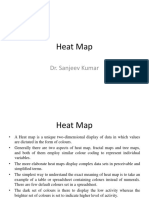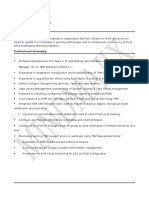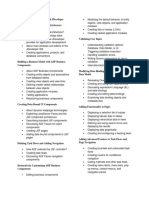0% found this document useful (0 votes)
35 views9 pagesData Science
The document is a presentation on Data Science in IoT, covering key concepts such as data collection, preprocessing, statistical techniques, and data visualization. It explains the use of heatmaps, their types, applications in various fields, and the steps to create them. Additionally, it addresses challenges in interpreting heatmaps effectively.
Uploaded by
itsmerakhi8940Copyright
© © All Rights Reserved
We take content rights seriously. If you suspect this is your content, claim it here.
Available Formats
Download as PDF, TXT or read online on Scribd
0% found this document useful (0 votes)
35 views9 pagesData Science
The document is a presentation on Data Science in IoT, covering key concepts such as data collection, preprocessing, statistical techniques, and data visualization. It explains the use of heatmaps, their types, applications in various fields, and the steps to create them. Additionally, it addresses challenges in interpreting heatmaps effectively.
Uploaded by
itsmerakhi8940Copyright
© © All Rights Reserved
We take content rights seriously. If you suspect this is your content, claim it here.
Available Formats
Download as PDF, TXT or read online on Scribd
/ 9




























































































